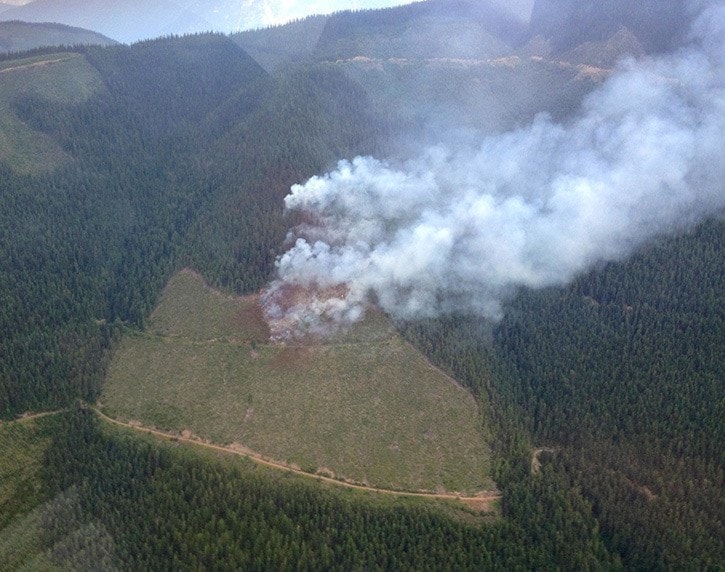Spectacular lightning storms have put on a show that has had fire fighters scrambling to put out spot fires in the Southeast corner of B.C.
"You're going to see a lot of helicopters in the Nakusp and New Denver area," said Fire Information Officer Karlie Shaughnessy. The choppers usually bucket water from the Arrow Lakes for the flames, and are stationed along with crew at a forward attack base in Nakusp.
About a dozen spot fires (fires less than 0.01 hectares in size) between New Denver and Burton were on the radar of the Southeast Fire Centre the morning of Thursday, August 15, all of them caused by lightning strikes earlier in the week. Ten were active and being addressed by initial attack crews, and two were being patrolled and watched for signs they could be returning to life.
All but two of the 68 active wildfires in the Southeast Fire Centre were caused by lightning. The majority of these fires are located in remote areas near Mica Creek, Revelstoke, Nakusp and Duncan Lake.
Many of the fires in the Nakusp-New Denver-Burton region are "a tree or two on fire" Shaugnessy told the Arrow Lakes News. They are all in remote areas and not threatening buildings or houses.
A fire on Mount Islip was reported Aug. 12, two near Kuskanax Creek 8 kilometres up the valley were called in Aug. 13 and 14.
Four fires were lit by lightning hits between St. Leon and Halfway creeks.
Three spot fires were located north of Trout Lake.
A 3.3 ha fire in Slewiskin north of MacDonald Creek reported on Aug. 11 is now out.
One spot fire was reported Aug. 12 east of Highway 6 near Scalping Knife in Burton. Due to lack of helicopter access, a repel crew was sent in to put it out. Another fire was located near Miller Creek, and two more near Caribou Creek.
A small spot fire was reported on Aug. 12 almost two km up the Little Wilson Creek Forest Service Road, but was put out and is now being patrolled.
Another fire was reported near Shannon Creek Aug. 14.
Two lightning-caused fires were seen on the west side of Slocan Lake directly across from New Denver.
The largest of the Southeast fires are a 75-hectare fire 1.5 km east of the north arm of Duncan Lake; the 64.5-hectare Perry Ridge fire 4.5 km west of Winlaw (now 100-per-cent contained); a 22.6-hectare fire 35 km northeast of Revelstoke, near Jumping Creek; and a seven-hectare fire 30 km northeast of Invermere.
Multiple large wildfires south of the border in Idaho may be bringing some haze on the wind to our northern mountains. The largest of these, the Pony Complex fire, has been estimated today at nearly 60,000 hectares.
The Fire Danger Rating is “moderate” to “high” throughout the Southeast Fire Centre with the exception of the Cranbrook Fire Zone, which is “low” to “moderate.”
As of Aug. 14, a total of 226 wildfires have burned 393 hectares in the Southeast Fire Centre. Of those fires, 192 were caused by lightning; the rest were caused by people.
The Southeast Fire Centre would like to thank the public for its help reporting wildfires during the increased activity this past week, and for its diligence in the safe use of campfires in this period of elevated fire danger. To report a wildfire or unattended campfire, call 1 800 663-5555 toll-free or *5555 on a cellphone.
